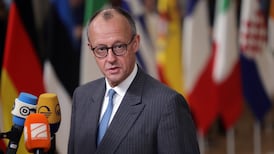The Dutch government is examining the possibility of deploying its own troops and police in volatile eastern Ukraine to secure the MH17 crash site and allow international investigators to gather the remaining forensic evidence in safety.
It’s understood the idea of putting “boots on the ground” was considered during a two-and-a-half hour cabinet meeting in The Hague on Wednesday evening – just hours after the Dutch Safety Board took over formal responsibility for the Malaysia Airlines disaster investigation.
The cabinet also looked at the possibility of using independent peacekeepers to secure the perimeter of the scene, but some ministers are believed to have been uneasy about “depending on a third party” to protect the investigators.
As a result, the Dutch government has begun a round of intensive consultations with the other countries that lost citizens in the apparent shooting down of the Boeing 777, to see if a Dutch-led mission is an acceptable solution to the continuing problem of security.
Paying respects
Australian foreign minister, Julie Bishop, was in Eindhoven on Wednesday among the dignitaries paying their respects as the first 40 of the 193 Dutch dead were flown home.
Yesterday she flew to Kiev with Dutch foreign minister, Frans Timmermans, to consult with the Ukrainian government, though the resignation of prime minister Arseny Yatsenyuk will make that more difficult.
Australia lost 36 citizens in the downing of the airliner and Ms Bishop agreed that, having removed the majority of the bodies from the crash site, the priority now was to ensure the site was secure enough to allow investigators to carry out their painstaking work safely.
The Australian government has already sent 50 police officers to London where they are standing by to transfer to the site near the village of Grabovo – possibly in a supporting role to the Dutch.
“We must ensure that the investigators and those who have the gruesome task of identifying the remains of bodies are able to concentrate on that job in complete safety, unfettered, without any tampering from anyone,” she said.
An “air bridge” was finally established on Wednesday between Eindhoven and Kharkiv, the government-controlled regional capital of eastern Ukraine, and the bodies of the first 40 Dutch passengers were flown home to be identified.
That painful process continued yesterday when the same two military transport planes brought home another 51 bags containing either bodies or parts of bodies, which were again met at Eindhoven air base by a guard of honour.
Again, after a moment's silence, followed by the playing of the Last Post, they were transferred to a fleet of hearses to be brought under police escort to the identification centre in Hilversum.
As the work of identifying the remains began yesterday, Arie de Bruyn, leader of the National Forensic Investigation team, said that counselling would be available for the forensic experts working on the bodies.
Emotional toll
“It would be too easy to underestimate the pressure they’re working under,” said Mr de Bruyn. “Accuracy is essential. They have to be right the first time. And of course there is the emotional side, which also takes its toll.”
He revealed that 80 foreign experts, from Australia, Germany, Belgium, the UK, Malaysia, Indonesia and New Zealand, were working alongside the Dutch team.
Meanwhile, there have been calls on the mayor of Hilversum, Pieter Broertjes, to resign after he demanded the deportation of Russian president, Vladimir Putin’s 29-year-old daughter Maria.
He claimed she lives with her Dutch boyfriend in a suburb of The Hague.
Mr Broertjes again apologised for his comments yesterday, saying that they were “not sensible” – this follows a report in one magazine that the penthouse where she apparently lived had been sold two months ago.











